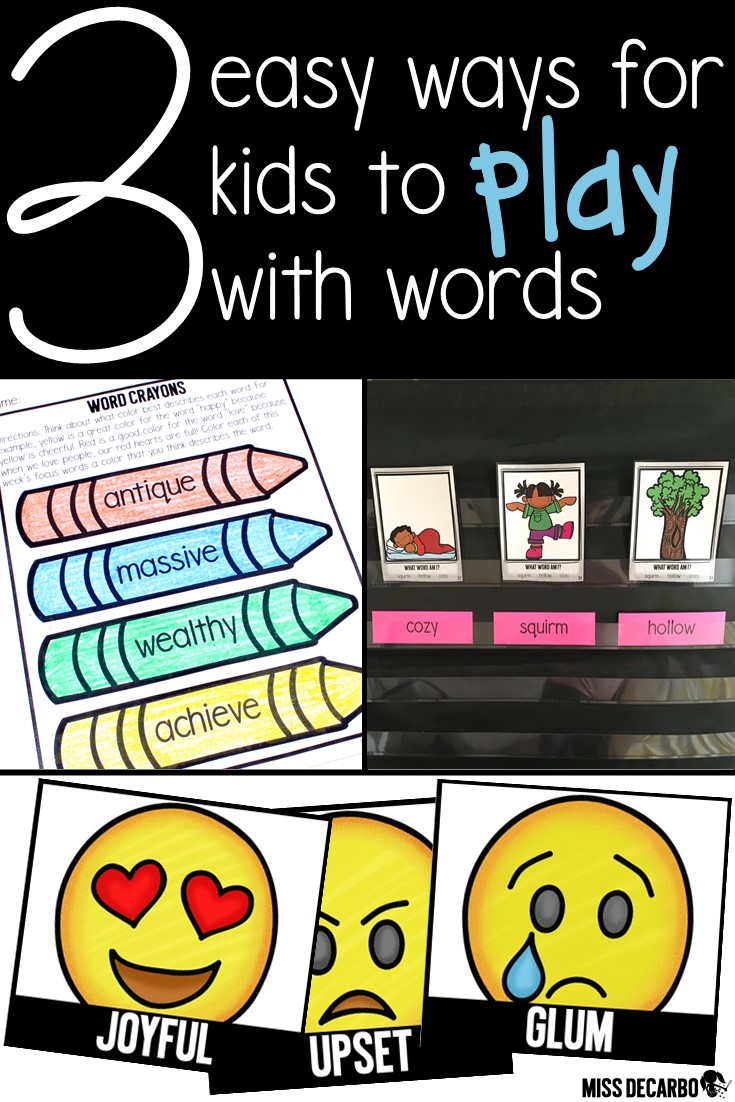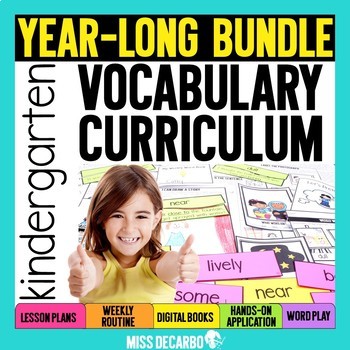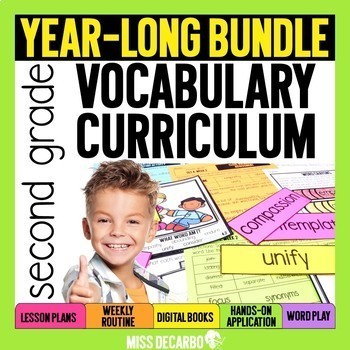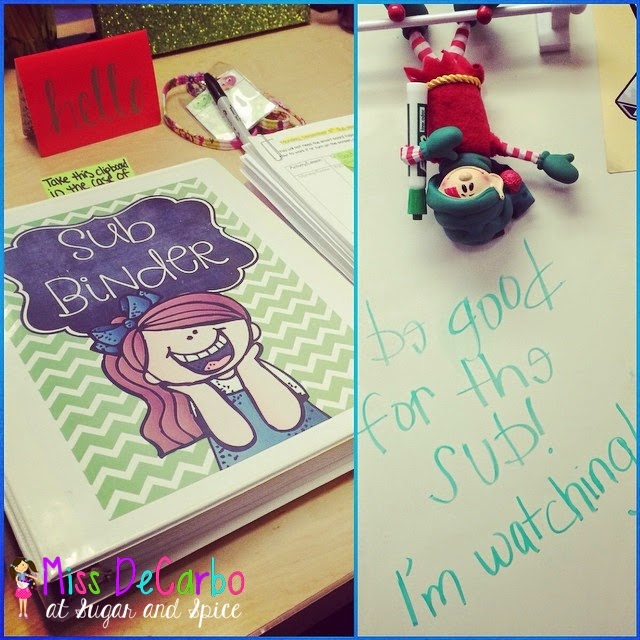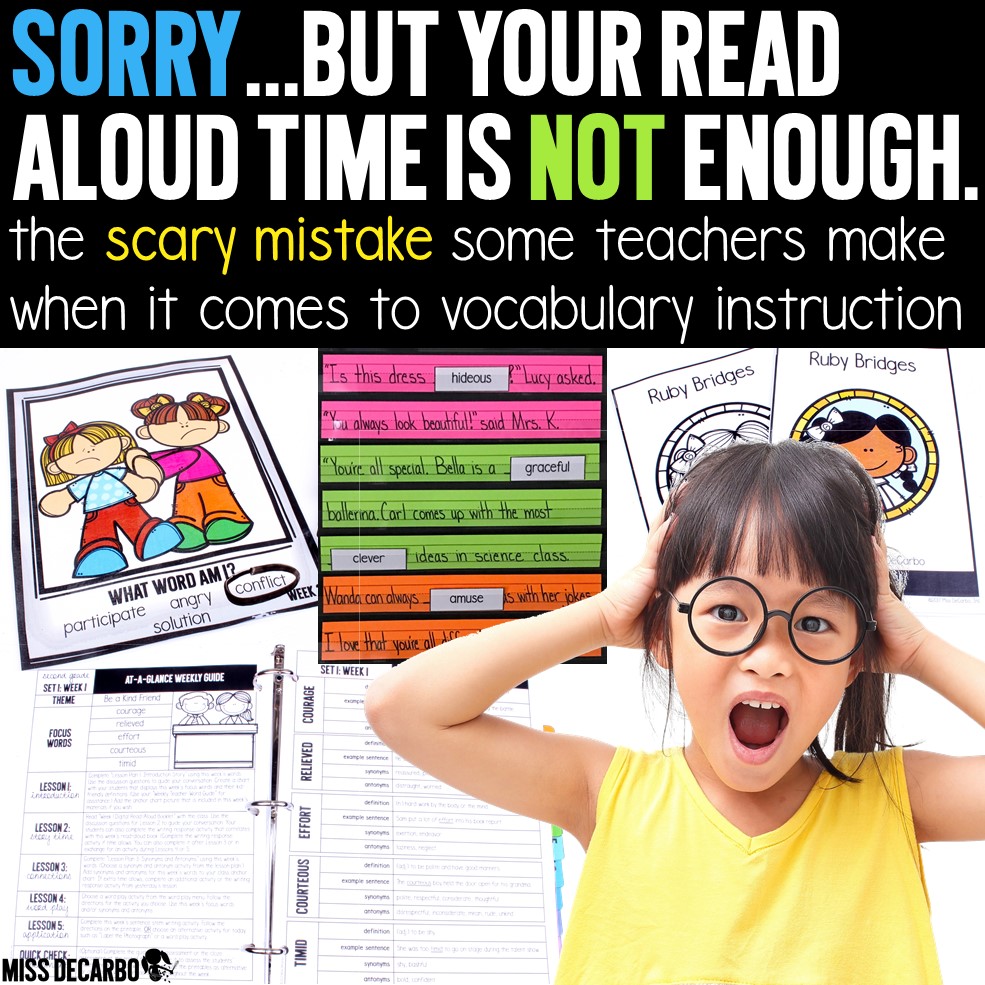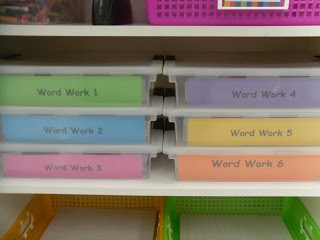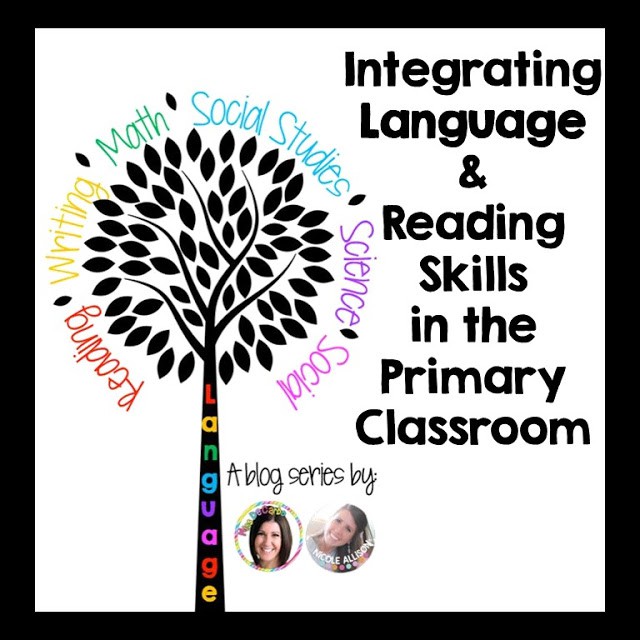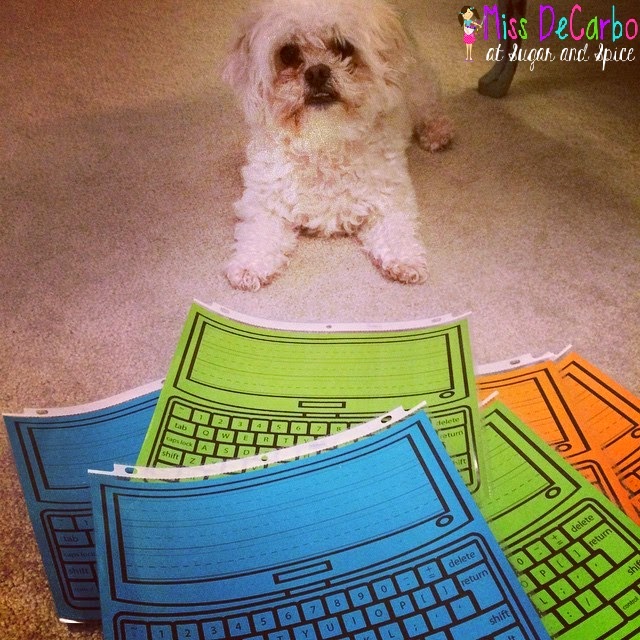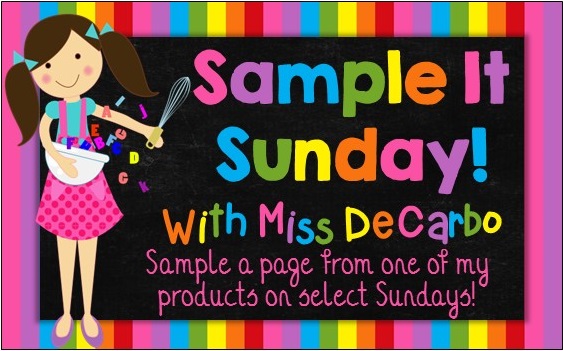Word Play Ideas for Vocabulary Instruction
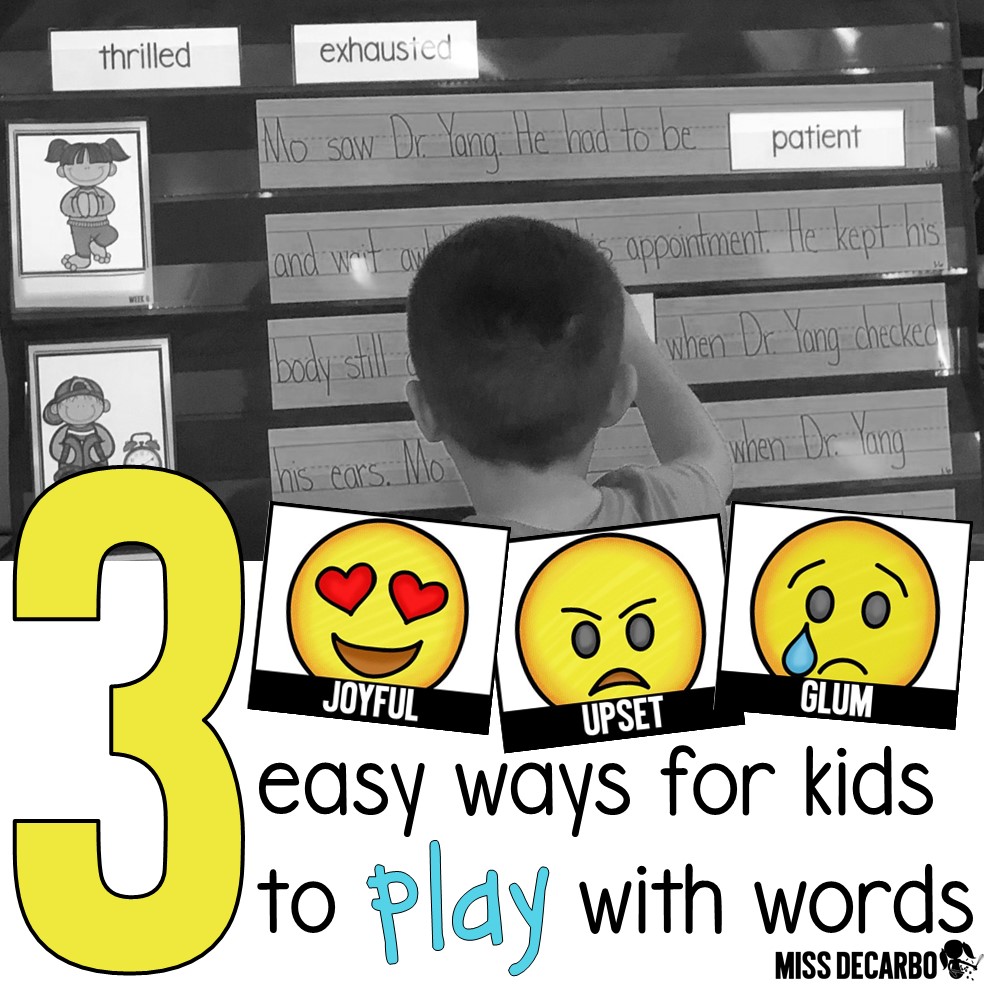
What is word play, and why is it important to your vocabulary instruction? As a teacher, you already know vocabulary is connected to your students’ reading and writing skills. Sadly, many students LACK a strong vocabulary. Without explicit vocabulary instruction, vocabulary gaps widen as these students get older. To truly own a new vocabulary word, it’s not enough to see, hear, or say the word. In order for new words to become part of your students’ lives, they need to interact with, use, and PLAY with words. Why is word play for vocabulary instruction important? What are some ways that students can play with vocabulary words in meaningful and engaging ways? In this post, let’s learn how word play fits into your daily vocabulary plan!
First Up: Your Vocabulary Plan
Let’s first make sure you HAVE a vocabulary plan in place. If you don’t explicitly include vocabulary instruction into your daily routine, it’s vital that you create a vocabulary plan. Not sure HOW to make a vocabulary plan and routine? I’ve got you covered, and I have EVERYTHING you need to get started! (Cue the celebration music!) Read all about my daily vocabulary routine in this blog post. In the post, I share a successful, EASY, and effective vocabulary routine for kindergarten, first grade, and second grade students. If you already have a vocab routine and plan in place, keep reading, and let’s quickly chat about why word play works!
Why Word Play Works
We want to develop students who are curious about words and motivated to learn new words. We also want students to be willing to take risks when opportunities to use new words arise. To put it simply, students should be excited about words and LOVE using them! To reach these goals, vocabulary instruction needs to not only be meaningful, but it needs to be FUN and filled with multisensory instruction. Providing ample opportunities for students to play with new words through song, games, art, drama, books, and oral language activities should be an important part of your weekly vocabulary instruction. In doing so, students will develop their word schema and an enthusiasm for learning, using, and interacting with new words. Word play activities also promote creativity and critical thinking when it comes to helping students make connections among new words and their synonyms.
Although there are TONS of different ways to allow students to play with new vocabulary words, I’m going to share three of my favorites with you. All three activities can be used with ANY vocabulary words you are working on with your students.
The materials used for the word play activities in this post comes from my Vocabulary Curriculum Bundles. These are available for kindergarten, first grade, and second grade. In order to best explain to you how each word play activity works, I have used photographs of the materials that are included in my vocabulary bundles.
Word Crayons
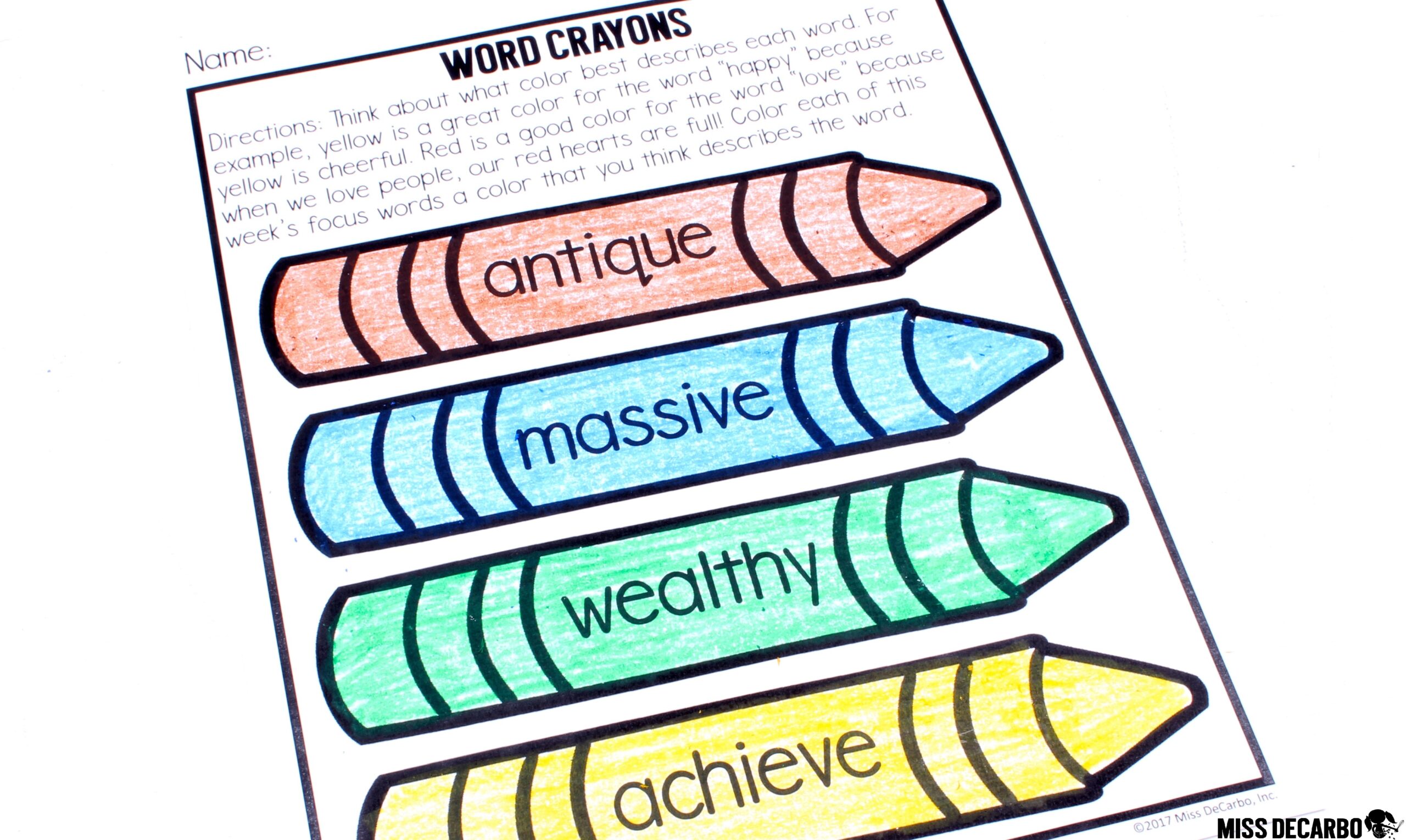
Your students will need a blank piece of paper and crayons for the Word Crayon activity. Explain to students that colors can be used to describe how someone is feeling or used to describe how something makes us feel. For example, if someone is feeling or looking blue, it means he or she is sad. Blue is sometimes used as a sad color. For this word play activity, choose one of your new vocabulary words. Your students will think about which color best describes what the word means or how the word makes them feel. Each student may only choose one color for each word. Most importantly, ask students to tell you WHY they chose the color.
This word play activity is very abstract, so let your students be creative! It’s important to model the activity before you start. For example, let’s use the word antique, which is shown in the picture above. I might explain to the students, “I chose brown for the word antique. An antique is something that is very old. A lot of antique objects start to get rusty as they age. The color brown reminds me of the rust on an old, antique object.” Have fun with this open-ended activity! Let your students be creative as they think deeply about each word.
Word Emojis
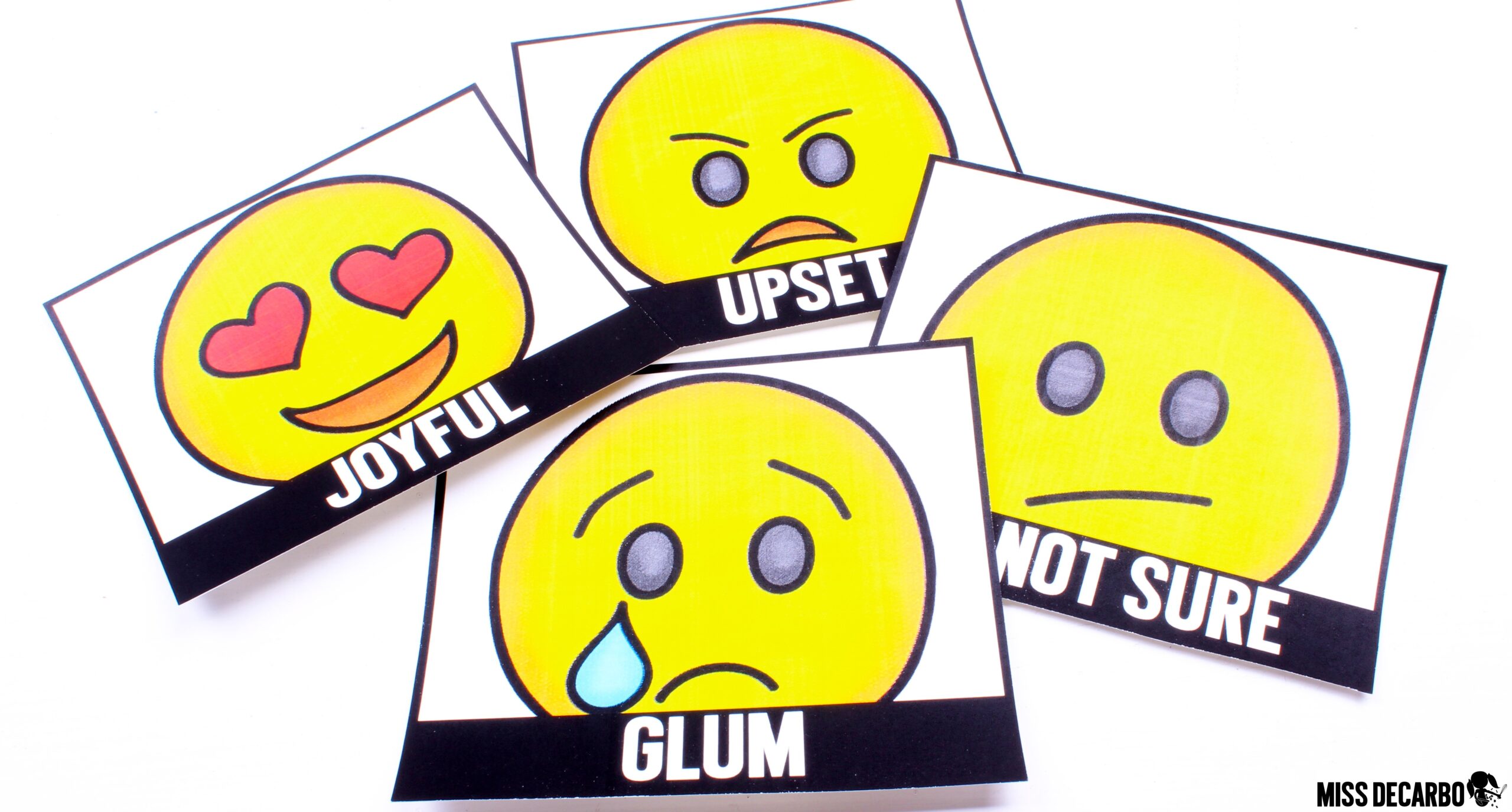
For this word play activity, your students will need a set of emoji sticks. (The cards shown above come from my Vocabulary Curriculum Bundles. If you’re not using the curriculum sets, have students draw their own emojis on paper cards.) Point to or hold up a vocabulary word you are studying with the class. Ask students to think about how the word makes them feel or how they feel when they see, hear, or use the word. Your students will hold up emojis to describe how they feel about the word or how the word makes them feel. For example, “The first word we will talk about today is greedy. I am holding up the glum emoji face because it makes me really sad and upset when people are greedy!”
In this word play activity, we are focusing heavily on feelings and emotions. In order to students to truly own a new word, they need to be able to think about how a word, and its synonyms, makes them feel.
What Word Am I?
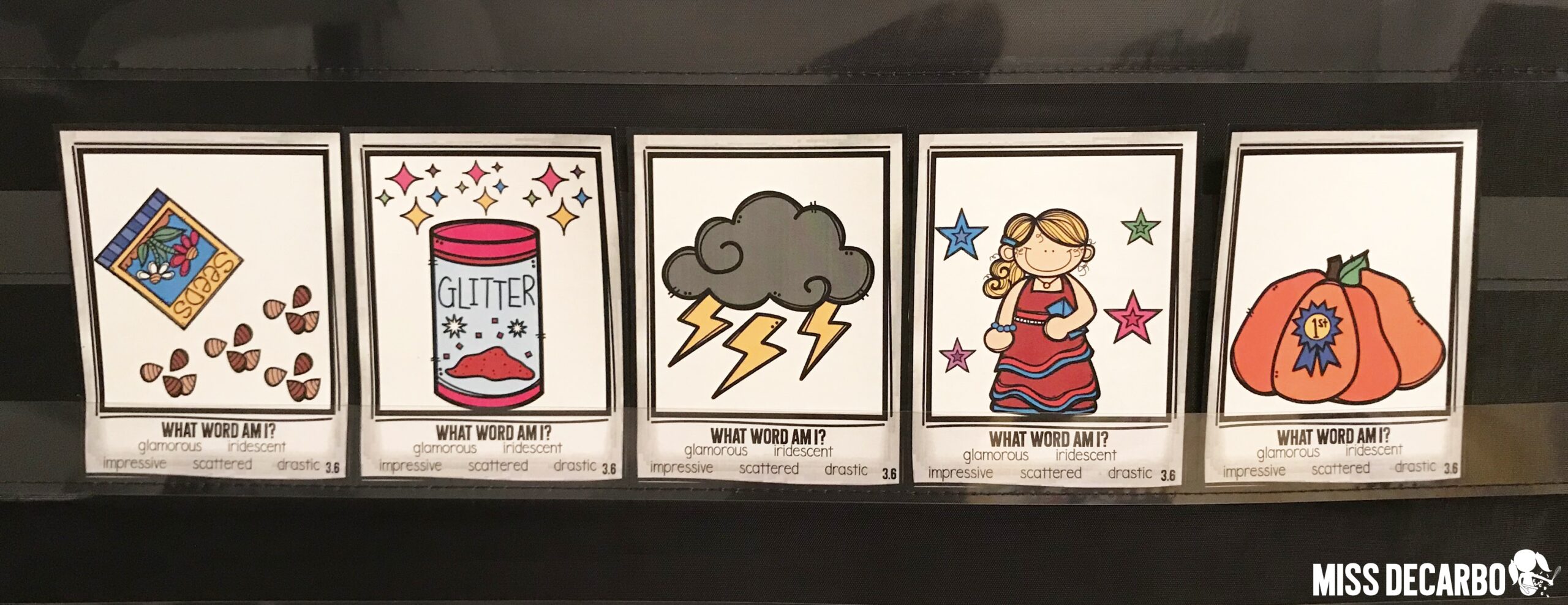
“What Word Am I?” is an open-ended word play activity your students will love! In the picture above, you will see that I have displayed five pictures in our pocket chart. I chose one picture for each of our vocabulary words, except I did NOT share which picture I chose for each word with the class! Hold up each picture and ask, “What word am I?” Give students time to discuss their ideas with a classmate. Students will “assign” one of their vocabulary words to each picture and explain why each picture best describes each word.

As students assign a vocabulary word to each picture, we use our word cards to label the pictures, as shown in the photograph above. It’s very important to have students explain WHY they chose the word for each picture. For example, one student might assign the word iridescent to the picture of the glitter because iridescent means shiny and glitter is shiny. Another student might choose the word scattered because glitter is always scattered EVERYWHERE after you use it. As you can see, there is no “right” or “wrong” answer, as long as the students can justify their reasoning through their oral explanations and examples.
Want MORE Word Play Ideas?
Did you love these three word play ideas for vocabulary?! They are SO fun, and my students get super engaged in our vocabulary lessons. If you loved this blog post, I have a feeling you are going to want even MORE word play games and ideas!
In addition to word play ideas, think about how amazing it would be to have…
- complete vocabulary lesson plans
- tier 2 vocabulary word lists
- teacher word guides with kid-friendly definitions, examples, and synonyms
- word cards to display and put into student notebooks
- DIGITAL read aloud books that teach words within context
- weekly vocabulary passages
- weekly writing extension activities
- interactive mini-books
- assessments
- …and MORE!
Sounds amazing, right?! I’d LOVE for you to take a minute to click on your grade level below, and learn about everything the Vocabulary Curriculum Bundles have to offer you! Teachers and administrators around the country are finding that this easy to implement, engaging vocabulary routine is creating word lovers, increasing vocabulary data, and adding ENGAGEMENT to vocabulary instruction. Click on your grade level to take a look!
Now…Go Play with Words!
I hope you loved learning about some of the word play ideas and games I use in my classroom. Even more, I hope your students love trying these word play ideas, too! To share this post with your colleagues, or to save it and reference it later, use the image below to pin it on Pinterest . Thanks for stopping by today! If you have any questions about any of the Vocabulary Curriculum Bundles for kindergarten, first grade, or second grade, feel free to reach out. I’m happy to help!
